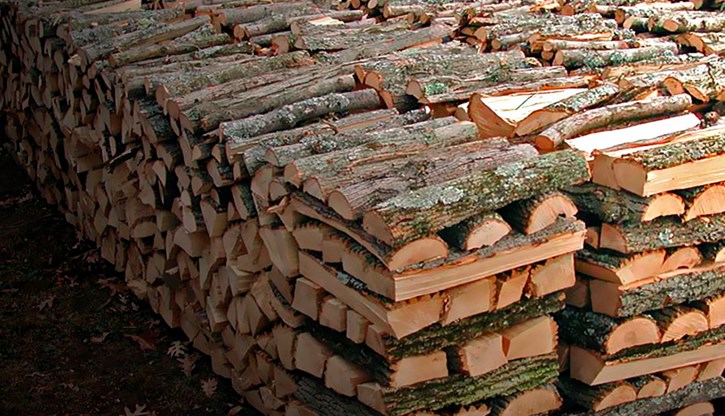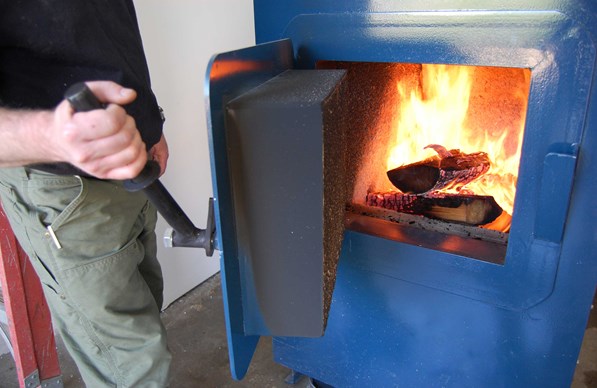Probably, there is no person in our country who would not be affected by the rise in the price of energy resources. The price for the consumer for gas, since 2000, has increased by 536%, and for fuel oil - 596%. Many owners of combined heating boilers are switching to solid fuel, namely firewood. About what kind of firewood is better for a solid fuel boiler and will be discussed in this publication.
The right choice of fuel for the furnace
In the understanding of the layman, firewood is any pieces of wood, waste lumber, woodworking and furniture production. In principle, it is possible to heat a furnace with such fuel, but will your modern boiler equipment work efficiently?
Firewood for heating boilers, stoves and fireplaces is logs, 25 - 35 cm long, with a moisture content of 15 - 25%. The main characteristics when choosing them are:
- Heating capacity.
- Ease of preparation and drying.
- burning duration.
- The smell and amount of resin emitted during combustion.
For combustion in heating boilers, it is necessary to choose types of wood with a long burning period, during which heat transfer occurs as slowly as possible. Even the best solid fuel wood-fired boiler will not effectively heat a home if it is not heated with the right fuel.
Slow burning with good heat dissipation is provided by wood with a dense structure. That is why hardwood firewood should be chosen for the firebox of a solid fuel boiler.
The difference between wood types
 All trees can be roughly divided into three categories according to the degree of wood hardness.
All trees can be roughly divided into three categories according to the degree of wood hardness.
- Solid varieties: white acacia, beech, oak, hornbeam, yew, maple, ash. This category includes hazel, hawthorn, pear.
- Medium hard: birch, cherry, cedar, cherry, walnut, plane tree, alder.
- Soft varieties: aspen, pine, spruce, poplar, larch.
As you understand, this is not a complete list of tree varieties that are commonly used in our country for fireboxes. Each grade has its own characteristics, therefore, before harvesting or purchasing this type of fuel, we recommend that you familiarize yourself with some of their characteristics.
- Oak, acacia, birch have a low natural humidity, so they burn beautifully even immediately after cutting. But, the wood of these varieties is quite difficult to ignite.
- Aspen and alder do not have volatile resins in their structure, so they burn cleanly, without soot deposits on the chimney. It has been noticed that if you heat with firewood of these varieties, the walls of the chimney are cleaned of tar and soot.
Birch has excellent calorific value: it burns hot and for a long time. Birch firewood is recommended for use in heating installations.
It should be noted that birch needs a lot of air for proper combustion. With its lack, such firewood will emit tar during combustion, which settles on the surfaces of the smoke ducts.
- Cherry melts rather poorly and burns with a large release of smoke.
- Apple and pear split well, dry quickly and burn well. The calorific value of these varieties is less than that of oak and birch.
It is not recommended to heat with conifers. They are rich in resin, which provides a quick burn and soot in the chimney. You should also avoid firing with firewood made from soft wood, as they quickly burn out with little or no heat left behind. Even in a long-burning solid fuel boiler, the consumption of firewood (for example, from poplar) will be enormous.
Let's digress a little, because we want to inform you that we have compiled a rating of solid fuel boilers by mode. You can learn more from the following materials:
Proper loading and firing of a solid fuel boiler with wood
Firewood is probably the most ancient type of fuel, especially in Russia, which is rich in forests. Unfortunately, most of our compatriots have lost the skill of properly preparing firewood, storing it and heating heating devices with it. In this regard, quite often on the network you can find the question: “how to heat a solid fuel boiler with wood?”
 Preparation: chocks are split, the resulting logs are folded in rows. Each row is placed perpendicular to the previous one for good ventilation, which contributes to quick drying.
Preparation: chocks are split, the resulting logs are folded in rows. Each row is placed perpendicular to the previous one for good ventilation, which contributes to quick drying.
Storage: Dried and ready-to-burn fuel is stored in a woodpile under a canopy. It is very simple to make it: hollow bricks or blocks are laid on the ground in two rows. The distance between the rows is approximately 60 cm. Thick lumber is placed on them, and logs are stacked on top. So that the rows do not crumble, they are propped up with thick stakes driven vertically into the ground. A canopy is made as protection from rain and snow. Instead, you can cover the woodpile with a thick plastic wrap.
Firebox: Before putting logs into the boiler plant, make sure they are dry.
The first step is to warm up the device. Put paper in the firebox, torches, small branches on it, and only after that - firewood. To warm up the installation, 50% of the fuel from the usual bookmark is needed.
Leave gaps between logs for good air circulation. All modern solid fuel boilers are equipped with automation. You should know that it does not turn on immediately, but only after the furnace and smoke channel have completely warmed up.
- Stage two. Clean out the ash pan. Splinters are laid in a well-heated firebox, on top of them there are logs, the laying of which is carried out in order or in the form of a well. To determine how much firewood is needed for a solid fuel boiler, you can empirically: when fully bookmarked, the logs should not reach the top of the firebox by 15 - 20 cm.
After the combustion has become stable, adjust the thrust, which affects the duration of heat transfer from the fuel.
Expert advice: A white flame and a hum in the flue system indicate excessive draft. In this mode, the efficiency of the installation is sharply reduced: the heat from fuel combustion is literally carried out into the pipe. The dark red color of the flame indicates that there is not enough oxygen for combustion: adjust the air supply. When firewood burns properly, the color of the flame is yellow.
